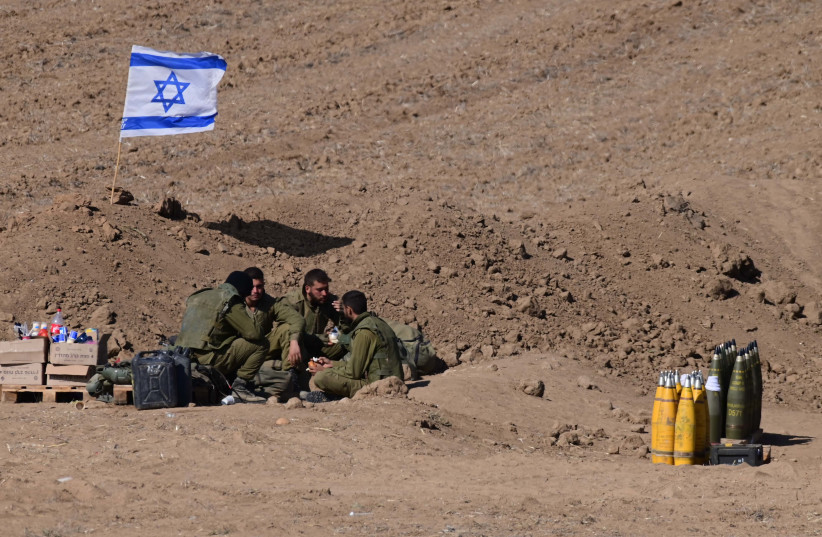What is delaying Israel’s ground invasion into Gaza? – analysis
When Hamas invaded southern Israel and massacred 1,400 people on October 7, the proposition among the IDF to enter Gaza arose almost immediately, and a ground incursion was expected to be launched within a few days.
The reasons to invade at the time, however, are quickly becoming obsolete. And as the invasion delays further, a variety of reasons are being brought forth as to why this is so – more than two weeks into this war.
The first reason, and the most obvious, is that in the first week of the war, not all of the 360,000 IDF reservists were in the right places with the right gear, and they were not all fully updated and trained for their disparate missions. So, they were not prepared to enter.
This is no longer true. Troops can always improve their readiness, but waiting and training for too long without acting creates skittishness and uneasiness, and it negatively impacts morale.

The second reason, cited last week – at which time it arguably made sense, and which the IDF is still citing – is to allow more time for Gazans to evacuate. By the end of the first week of fighting, around 500,000 Palestinians – roughly 50% – fled from northern Gaza southward. By the start of this third week, the number was up to above 700,000, close to 70%-75%. The argument is strong here to wait a little longer to enter so as to give more time for more civilians to evacuate. But it stands to reason that those who have not yet fled the targeted sites in the Strip will not do so.
This means that the IDF is going to be stuck fighting an urban battle against Hamas with many civilians. It was always going to be this way, somewhat due to Hamas’s entrenchment in Gaza; delaying the incursion is not going to change that.
The third – and probably the most decisive – reason is the following: The more IAF attacks there are, the fewer IDF losses there will be once they enter on the ground, because the remaining Hamas forces will be significantly weakened.
This was true for delaying from week one to week two, but it has been almost impossible to decode any new progress by the IAF in the last several days other than simply hitting a higher quantity of targets.
After each additional day of hundreds of strikes, the fact is that Hamas has thousands and thousands more rockets to keep firing and some tens of thousands of fighters, a majority of whom will not be killed or captured without Israeli troops on the ground. Hamas’s ability to maintain some level of fighting will not stop without a long ground invasion.
Once the invasion begins, many soldiers will die
Once the ground invasion starts, a large number of soldiers will die, more than in any of the rounds of conflict we have seen in recent decades. There simply is no other way to subdue Hamas.
Aerial bombing absolutely can pave the way for an earlier invasion, but it does not eliminate risk or ground troop losses.
So, whether the driving force here is political fear or authentic guilt about ordering a significant number of young troops to their deaths, that concern cannot justify a further delay of the invasion.
It merely delays the inevitable, lowers morale, and reduces the small window of time the world has allotted Israel to spend in Gaza toppling Hamas.
As Thomas Jefferson said, “The tree of liberty must be refreshed from time to time with the blood of patriots and tyrants.” No one should rush into such a scenario, but Israel and the IDF are long past the point of rushing and have reached the stage of dwindling returns.





Comments are closed.